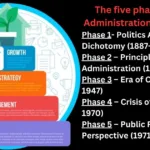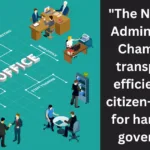In 1960, the Vasantrao Naik Committee released a set of recommendations that had a profound impact on the establishment of local self-government in Maharashtra. The committee’s proposals brought about significant changes in the governance landscape of the state and paved the way for the empowerment of local communities. Through its recommendations, the Vasantrao Naik Committee aimed to decentralize power and authority to local bodies, enhance accountability and transparency, and strengthen grassroots democracy. These recommendations were instrumental in transforming the local governance system in Maharashtra and continue to shape its evolution.
Key Takeaways
- The Vasantrao Naik Committee’s recommendations in 1960 had a significant impact on the establishment of local self-government in Maharashtra.
- The committee aimed to decentralize power and authority to local bodies, enhance accountability and transparency, and strengthen grassroots democracy.
- The recommendations were instrumental in transforming the local governance system in Maharashtra.
- The evolution of local self-government in Maharashtra continues to be shaped by the Vasantrao Naik Committee’s recommendations.
- The empowerment of local communities is a key focus of the committee’s proposals.
Background of the Vasantrao Naik Committee
As you delve into the recommendations of the Vasantrao Naik Committee and their impact on the establishment of local self-government in Maharashtra in 1960, it is crucial to understand the background of the committee and its formation.
The Vasantrao Naik Committee was established in 1959 to study the existing system of local governance in Maharashtra and suggest measures for its improvement. The formation of the committee was a response to the growing demand for decentralized governance and greater participation of local communities in decision-making processes.
At the time of its formation, Vasantrao Naik was the Chief Minister of Maharashtra and led a coalition government comprising the Indian National Congress and the Praja Socialist Party. The committee was chaired by the former Chief Justice of the Bombay High Court, M. C. Chagla, and included 23 members from various backgrounds, including administrators, politicians, and experts in local governance.
Objectives of the Vasantrao Naik Committee

The Vasantrao Naik Committee was formed in the year 1959 with the primary objective of suggesting measures for the establishment of a decentralized system of local self-government in Maharashtra. The primary aim of the committee was to strengthen the democratic process at the grassroots level and to ensure that the benefits of development programs reach the people at the lowest rungs of society.
The committee was given the task of examining the existing system of local self-government in the state and suggesting measures for its improvement. The committee also aimed to ensure that the local bodies had adequate financial resources to discharge their functions and that they were accountable to the people they served.
The committee’s objectives were to:
- Devolve power to the local bodies so that they can function effectively.
- Provide adequate resources to the local bodies to enable them to discharge their functions.
- Ensure the active participation of people in the democratic process at the grassroots level.
- Promote transparency, accountability, and efficiency in the functioning of local bodies.
- Empower the local bodies to take decisions that affect the lives of the people they serve.
The Vasantrao Naik Committee was a significant step towards strengthening democracy at the grassroots level in Maharashtra. Its recommendations aimed to empower people at the local level and to ensure that their voices were heard in matters of local governance. By providing local bodies with the power and resources they need to function effectively, the committee aimed to promote local development and to ensure that the benefits of development reached the poorest of the poor.
Recommendations for Local Self-Government
The Vasantrao Naik Committee’s recommendations for local self-government in Maharashtra were comprehensive and far-reaching. The committee emphasized the importance of decentralization of power and decision-making to the local level, as well as greater community participation in the governance process.
This committee was established on 22nd June 1960 and submitted its report on 15th March 1961.
Based on the recommendations of the Vasantrao Naik committee, the Government of Maharashtra passed the Maharashtra Panchayat Samiti and Zilla Parishad Act, 1961.
Important Recommendations:
- There should be three tiers of Panchayati Raj institutions in Maharashtra, in which Zilla Parishad (ZP) should be given importance.
- The administrative chief of ZP should be an officer of IAS rank.
- The district collector should have no right to interfere in internal matters of the ZP.
- MLA, MLC, and MP should not be given membership in or representation in ZP.
- Panchayat Samiti should be given the rank of deputy executive committee for ZP.
- The Block Development Officer (BDO) should be the executive head of the Panchayat Samiti.
- Establishment of one Gram Panchayat for every 1000 people.
- There shall be a Gram Sevak for each Gram Panchayat.
- The acts of governance shall be the same for Zilla Parishad and Panchayat Samiti.
The committee proposed the establishment of local bodies at the village, block, and district levels. It recommended that these bodies be given autonomous control over local administration, with the power to generate revenue and manage local resources.
The committee also advocated for the establishment of a three-tier system of local self-government, consisting of gram sabhas, gram panchayats, and zilla parishads. The gram sabhas were meant to be the primary units of local self-governance, with the gram panchayats serving as administrative bodies at the village level. The zilla parishads were to act as coordinating and supervisory bodies at the district level.
In addition, the committee recommended direct elections of local body representatives, with a mandatory reservation of seats for women, scheduled castes, and scheduled tribes. It also proposed the creation of a state finance commission to oversee the financial management of local bodies and ensure their fiscal autonomy.
The committee’s recommendations for local self-government in Maharashtra laid the foundation for a more democratic and participatory governance system at the local level. These recommendations aimed to ensure the provision of basic services and infrastructure at the grassroots level and address the needs of local communities more effectively.
Impact on Maharashtra’s Local Governance
The recommendations of the Vasantrao Naik Committee had a profound impact on the local governance system in Maharashtra. The establishment of local self-government brought about significant changes in the state’s administrative structure, enhancing citizen participation and promoting decentralization of power.
The impact of the committee’s recommendations was felt across all levels of local governance, from village panchayats to municipal corporations. The devolution of power to local bodies helped to strengthen grassroots democracy, promoting greater public participation in decision-making processes and improving responsiveness to local needs.
In addition to empowering local communities, the Vasantrao Naik Committee’s recommendations also aimed to enhance accountability and transparency in local governance. This was achieved through the implementation of measures such as mandatory disclosure of information by local authorities and the establishment of audit committees to monitor financial transactions.
The impact of these measures was significant, with greater accountability and transparency leading to improved trust between citizens and local authorities. Citizens became more aware of their rights and responsibilities, and were better able to hold local representatives accountable for their actions.
Overall, the implementation of the Vasantrao Naik Committee’s recommendations has had a positive impact on Maharashtra’s local governance system. The state has been able to establish a more participatory and responsive governance structure, promoting greater citizen engagement and fostering a sense of ownership among local communities.
Strengthening Grassroots Democracy

The Vasantrao Naik Committee recognized the need to strengthen grassroots democracy in Maharashtra. They recommended that local self-government be established at the village, taluka, and district levels, with elected representatives from each area. The committee envisioned a system where local communities could participate in decision-making processes and have a say in matters that directly affected their daily lives.
To achieve this goal, the committee proposed that village panchayats be given the power to levy taxes, administer local funds, and manage local resources. They also recommended the establishment of taluka and district councils, with the power to regulate and oversee the functioning of the village panchayats.
The committee emphasized the need for greater involvement of women and marginalized communities in the local governance system. They recommended that at least one-third of seats in village panchayats and councils be reserved for women. They also proposed the reservation of seats for Scheduled Castes and Scheduled Tribes in proportion to their population in each area.
The Vasantrao Naik Committee recognized the role of education and awareness in strengthening grassroots democracy. They recommended that schools and colleges be encouraged to organize programs on local governance and citizenship, with a focus on the importance of community participation and civic responsibility. They also proposed the establishment of a ‘Local Government Knowledge Center’ to disseminate information and knowledge on local governance.
Overall, the Vasantrao Naik Committee’s recommendations aimed to empower local communities and enhance their participation in decision-making processes. By establishing a system of local self-government, the committee envisaged a more democratic and accountable governance system at the grassroots level, with greater representation and involvement of marginalized communities.
Devolution of Power to Local Bodies
The Vasantrao Naik Committee’s recommendations on local self-government included a crucial aspect of devolution of power to local bodies. The committee recognized the importance of decentralization and empowering local communities to make decisions that impact their lives directly.
The idea of devolution of power involves transferring decision-making authority and responsibilities to local bodies, such as municipal corporations, councils, and panchayats. By doing so, local bodies can effectively cater to the specific needs and priorities of their communities, rather than following a uniform approach dictated by state or central authorities.
The Vasantrao Naik Committee’s recommendations emphasized the need for greater autonomy and flexibility in decision-making at the local level. The committee proposed the creation of an appropriate legal framework for local self-government that would provide for the devolution of power and responsibilities to local bodies. In addition, the committee suggested the establishment of a system of checks and balances to ensure the accountability of local bodies and prevent abuse of power.
Devolution of power to local bodies has been a critical aspect of the local self-government system in Maharashtra since the implementation of the Vasantrao Naik Committee’s recommendations. Through the devolution of power, local bodies have been able to take charge of their communities’ development and work towards their specific needs and priorities. This has resulted in a more democratic and participatory approach to governance, where local citizens have a direct say in decision-making.
However, the implementation of devolution of power has also faced several challenges. One major hurdle is the lack of financial and administrative capacity at the local level. Many local bodies struggle to generate revenue and resources to fund their development projects, hindering their ability to carry out their responsibilities effectively.
Another significant challenge is the lack of awareness and education among local citizens regarding their role and responsibilities in the local self-government system. This has resulted in low participation rates in local elections and decision-making processes, limiting the effectiveness of local bodies.
Despite these challenges, the devolution of power has been a significant success in Maharashtra’s local self-government system. The state has set an example for other Indian states to follow and has given local communities a more prominent role in governance, further strengthening democracy and promoting inclusive development.
Enhancing Accountability and Transparency

The Vasantrao Naik Committee’s recommendations aimed at enhancing accountability and transparency in the local governance system in Maharashtra. The committee emphasized the need for elected representatives to be accountable to the people they serve and for administrative processes to be transparent and accessible to the public.
One of the key mechanisms proposed by the committee was the establishment of local watchdog committees, comprising representatives from civil society, to monitor the functioning of local bodies and ensure their accountability. These committees were responsible for examining the financial statements of local bodies and reporting any discrepancies to the authorities.
The committee also recommended the implementation of a system for public disclosure of information, whereby all administrative processes and decisions were made available for public scrutiny. This system aimed to create greater transparency in the functioning of local bodies and enhance the trust of citizens in their elected representatives.
Furthermore, the Vasantrao Naik Committee recommended the establishment of a grievance redressal system at the local level, to address the concerns and complaints of citizens. This system allowed for greater participation of citizens in decision-making processes and ensured that their voices were heard and acted upon.
Overall, the Vasantrao Naik Committee’s recommendations for enhancing accountability and transparency in the local governance system in Maharashtra have had a significant impact on the functioning of local bodies. Through the implementation of these recommendations, the state has witnessed greater citizen participation, improved accountability of elected representatives, and increased transparency in administrative processes.
Challenges and Implementation Issues
Implementing the recommendations of the Vasantrao Naik Committee was not without its challenges and issues. One of the main challenges was resistance from the existing power structure, which viewed the devolution of power and authority to local bodies as a threat to their control. This resistance led to delays and obstacles in the implementation of the committee’s proposals.
Another significant challenge was the lack of resources and capacity at the local level. Many local bodies were ill-equipped to take on the additional responsibilities entrusted to them, lacking the necessary skills and infrastructure to deliver on their mandates. This lack of capacity impaired the progress of the implementation process.
Furthermore, the lack of awareness and understanding of the importance of local self-government was another hurdle to the successful implementation of the committee’s recommendations. Many people were unaware of the role and function of local bodies, which hindered public participation in decision-making processes at the local level.
The implementation of the Vasantrao Naik Committee’s recommendations also faced challenges in terms of achieving equitable distribution of resources and benefits among all communities. There were instances of discrimination and uneven distribution of resources, which adversely affected marginalized communities and undermined the goals of the recommendations.
Despite these challenges, efforts were made to address these implementation issues and improve the functioning of local self-government in Maharashtra. Capacity-building and training programs were initiated to equip local bodies with the necessary skills and knowledge. Awareness campaigns and public education initiatives were also launched to increase public understanding of the importance of local self-government.
However, the challenges and implementation issues remain relevant today, and efforts must continue to overcome these hurdles and ensure the effective functioning of local self-government in Maharashtra.
Key Milestones and Successes
The implementation of the recommendations put forth by the Vasantrao Naik Committee in 1960 marked a significant milestone in the history of local self-government in Maharashtra. The Committee’s proposals brought about a fundamental shift in the governance system, paving the way for enhanced accountability, transparency, and citizen participation at the local level.
Over the years, the state’s local self-government system has witnessed several successes, including the establishment of democratically elected bodies at the village, district, and municipal corporation levels. This has led to the empowerment of local communities, their increased participation in decision-making processes, and the implementation of policies that cater to their specific needs.
The devolution of powers to local bodies has been a significant success of the Vasantrao Naik Committee’s recommendations. This has allowed for effective governance and the smooth functioning of local administration, leading to more efficient delivery of services to citizens. Additionally, the introduction of transparency measures has significantly reduced corruption and malpractices in the system, ensuring that taxpayer money is put to good use.
The strengthening of grassroots democracy has been another major milestone in the evolution of local self-government in Maharashtra. As a result, citizens have become more aware and involved in the governance process, leading to the formulation of policies that align with their needs and aspirations. Also, the introduction of reservation for women in local bodies has been a significant success, leading to increased female representation in decision-making processes.
Overall, the implementation of the Vasantrao Naik Committee’s recommendations in 1960 has been a major success story for local self-government in Maharashtra. It has paved the way for efficient, transparent, and accountable governance at the local level, empowering citizens and strengthening democracy.
Future Prospects and Evolution
Looking ahead, the future of local self-government in Maharashtra appears bright, with many exciting prospects for further evolution and improvement. Building upon the strong foundation laid by the Vasantrao Naik Committee’s recommendations, the state has already made significant progress in enhancing democracy, accountability, and transparency at the local level. However, there is still much work to be done to fully realize the potential of this system.
One of the key areas for future development is the use of technology to improve the functioning of local bodies. As digital technologies continue to advance rapidly, there are tremendous opportunities for local governments to leverage these tools to automate their processes, improve data management, and enhance citizen engagement. By embracing new technologies, local self-government in Maharashtra can become more efficient, effective, and responsive to the needs of its communities.
In addition, there is a growing recognition of the importance of collaboration and cooperation between local bodies in different regions. By sharing best practices, exchanging ideas, and working together to tackle common challenges, local governments can create a more cohesive and integrated system that delivers better outcomes for all. This requires a shift towards a more collaborative and inclusive approach to governance, where local bodies are empowered to work together towards a shared vision of progress and development.
Finally, there is a need for ongoing monitoring and evaluation of the local self-government system to ensure that it continues to evolve and adapt to changing circumstances. By gathering data, conducting surveys, and soliciting feedback from citizens and stakeholders, local bodies can identify areas for improvement and make course corrections as needed. This data-driven approach can help to ensure that local self-government in Maharashtra remains responsive, accountable, and effective over the long term.
You Can Read: Panchayat Raj System in India during British Era
Conclusion
In conclusion, you have gained valuable insights into the recommendations of the Vasantrao Naik Committee and their impact on the establishment of local self-government in Maharashtra. Through the exploration of the committee’s primary goals and intentions, you have gained a comprehensive understanding of its purpose and vision. By delving into the specific recommendations put forward by the committee, such as the devolution of power to local bodies and the enhancement of accountability and transparency in local governance, you have come to appreciate the significant changes brought about by these policies and their implications for local governance in Maharashtra. Despite the challenges and implementation issues faced along the way, such as the difficulty in translating these recommendations into effective policies and practices at the local level, Maharashtra has witnessed a significant shift towards grassroots democracy, enhanced accountability, and transparent governance at the local level. As you look towards the future, it is essential to build upon these foundations and continue to evolve the local self-government system for the betterment of Maharashtra and its communities. Indeed, the Vasantrao Naik Committee’s recommendations have laid a strong foundation for the future of local governance in Maharashtra, and it is up to you to ensure that this system continues to evolve and grow in the years to come.
FAQ
Q: What were the recommendations of the Vasantrao Naik Committee-1960?
A: The Vasantrao Naik Committee-1960 made several recommendations regarding the establishment and functioning of local self-government in Maharashtra.
Q: What is the background of the Vasantrao Naik Committee?
A: The Vasantrao Naik Committee was formed to address the need for local self-government in Maharashtra. It was established in a specific context to fulfill certain objectives.
Q: What were the objectives of the Vasantrao Naik Committee?
A: The Vasantrao Naik Committee had specific objectives in mind, focused on improving local governance and empowering communities at the grassroots level.
Q: What were the recommendations made by the Vasantrao Naik Committee for local self-government?
A: The Vasantrao Naik Committee made a range of recommendations aimed at facilitating the establishment and functioning of local self-government in Maharashtra.
Q: What was the impact of the Vasantrao Naik Committee’s recommendations on Maharashtra’s local governance?
A: The recommendations of the Vasantrao Naik Committee had a significant impact on the local governance system in Maharashtra, bringing about transformative changes.
Q: How did the Vasantrao Naik Committee aim to strengthen grassroots democracy?
A: The Vasantrao Naik Committee focused on strategies to empower local communities and enhance their participation in decision-making processes, thereby strengthening grassroots democracy.
Q: What did the Vasantrao Naik Committee propose regarding the devolution of power to local bodies?
A: The Vasantrao Naik Committee advocated for greater decentralization of authority and responsibility to local bodies, emphasizing the devolution of power as a key aspect of local self-government.
Q: How did the Vasantrao Naik Committee aim to enhance accountability and transparency in local governance?
A: The Vasantrao Naik Committee proposed mechanisms to ensure greater accountability of elected representatives and increased transparency in administrative processes at the local level.
Q: What were the challenges and implementation issues faced during the execution of the Vasantrao Naik Committee’s recommendations?
A: The implementation of the Vasantrao Naik Committee’s recommendations faced various challenges and issues, which impacted the effective execution of the proposed policies.
Q: What were the key milestones and successes achieved as a result of the Vasantrao Naik Committee’s recommendations?
A: The recommendations of the Vasantrao Naik Committee led to significant milestones and successes in the realm of local self-government in Maharashtra, bringing about positive outcomes.
Q: What are the future prospects and potential evolution of local self-government in Maharashtra?
A: The future prospects for local self-government in Maharashtra involve further improvements and advancements based on the foundations laid by the Vasantrao Naik Committee’s recommendations.











